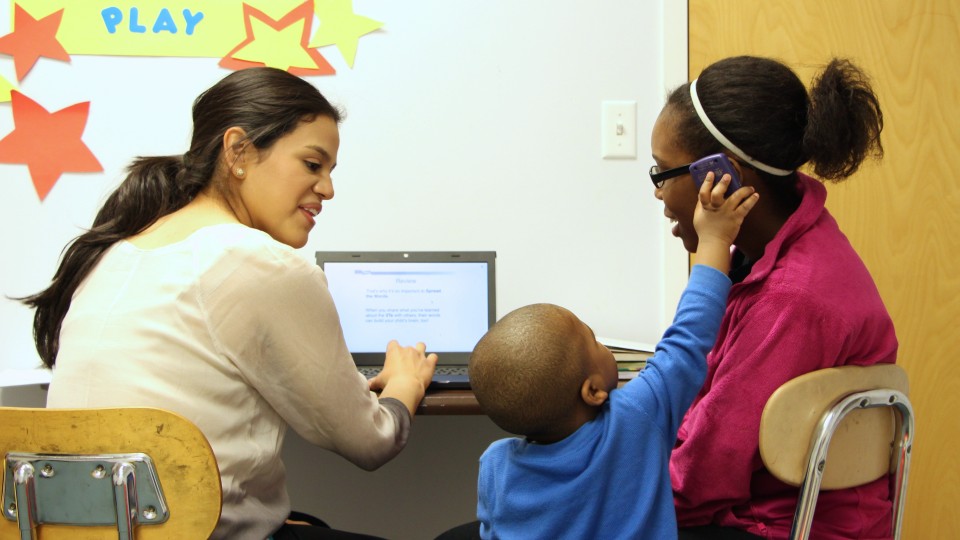Helping children manage their emotions
- March 20, 2018
- / Reggie Dogan
- / early-learning

From birth to age 3, parents and caregivers have a big part to play in helping children learn about feelings.
The most important thing they can do is meet their babies’ needs, love and nurture them, and comfort them when they are upset.
This type of responsive care helps very young children build a strong, loving relationship with the adults who care for them.
Feeling safe and secure, loved and nurtured, is the biggest and most important ingredient for a child’s healthy social-emotional development.
Since last summer, SCI staff has offered parents tips, strategies and lessons on early learning initiatives to use with their young children under 4 years old.
Our mission is to improve the quality of life for everyone in Northwest Florida and the primary purpose of parent outreach is to provide parents with the skills to help build their babies’ brains and prepare them for kindergarten.
Building brains involves not only intellectual development but also emotional and social development as well.
Young children experience many of the same emotions adults do. Children can feel angry, jealous, excited, sad, silly, frustrated, happy, and worried.
The difference is that very young children—ages birth to 3—often lack the self-control and language skills to express their strong feelings in ways that adults find acceptable.
Helping children manage their emotions involves creating and maintaining children’s feelings of safety, calm and optimism. For this to happen, children need repeated experiences of having their needs met by a responsive and caring adult.
Children need adults to help when they are feeling overwhelmed. They also need support from adults to contain and manage their intense feelings.
Gradually children learn to manage emotions for themselves from their experiences with warm, responsive adults.
In Modern Parenting.com, these tips from Heidi Feldman, M.D., of Children's Hospital of Pittsburgh, can help your toddler learn about feelings:
PUT A NAME TO FACES: When you see someone smiling (in person, on TV, in an illustration), say, "She must be happy." Do the same for other facial expressions.
LABEL HIS FEELINGS: When your child expresses an emotion, name it: "You must be sad because you're crying," or "I can see you're glad to be at the park."
EXPRESS YOURSELF: Let him know what you're experiencing. Tell him, "I feel proud when I've finished my work," or "I'm sad that it's raining and we can't go outside."
When describing your toddler's emotions or your own, be honest and clear. If your child says he's angry, don't tell him he shouldn't be; if you reprimand him for something, don't turn around and claim you're not really mad. Both messages will confuse him.
LISTEN UP: As your toddler is learning to identify his feelings, encourage him to talk about them. It's important to take the time to hear him out -- whether he's excited about an upcoming playdate or concerned about a trip to the doctor. The more practice he has saying what he's feeling, the better he'll be at identifying his emotions, and the less likely he'll be to act out the negative ones.
All parents want the best for their children, and that includes being healthy and happy. Supporting their emotional and social development is just as important as supporting their physical development.
 CivicCon launches with a look at good growth in cities
CivicCon launches with a look at good growth in cities
 Building stronger brains one baby, one parent at a time
Building stronger brains one baby, one parent at a time
 SCI debuts commercial on Early Learning City
SCI debuts commercial on Early Learning City
 Entrecon: World class speakers and an opportunity to sharpen skills
Entrecon: World class speakers and an opportunity to sharpen skills
 PYP Quality of Life survey 2017
PYP Quality of Life survey 2017
 EntreCon Pensacola 2016: A look back
EntreCon Pensacola 2016: A look back
 Leadership tip: getting better employee takeaways
Leadership tip: getting better employee takeaways
 Leadership tip: be interested instead of interesting
Leadership tip: be interested instead of interesting
 Leadership tip: delivering difficult messages
Leadership tip: delivering difficult messages
 Brain Bags boost Arc, Early Childhood Court programs
Brain Bags boost Arc, Early Childhood Court programs